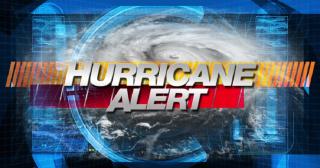LATEST UPDATE: Hurricane/Tropical Storm Weather Preparedness and Safety

East Hartford, CT - Hurricane Isaias is approaching Connecting faster than expected. The storm is expected to impact our area today, Tuesday (August 4) as a tropical storm. We are urging residents to take precautions and refresh their personal and family preparedness plans. Now is the time to make a plan and gather essential items in case of emergency.
At 5:00 AM Tropical Storm Isaias was located near 36.3 N 77.5 W or approximately 85 miles west southwest of Norfolk, Virginia. Isaias has maximum sustained winds of 70 MPH and is moving to the north northeast at 28 MPH. Tropical Storm warnings are in effect for all of Southern New England.
T.S. Isaias is moving faster than expected and this has moved up the time of impact by 2 hours for our area. The center of T.S. Isaias is now forecast to make its closest approach (close to western CT) at approximately 4:00 PM this afternoon. The latest runs are indicating that the right eye wall will move through Fairfield County and then along the border of Connecticut and New York between 2:00 – 6:00 PM. The models are indicating that the tropical storm is going to still be packing gusts between 65 – 75 MPH in Western Connecticut and between 55 - 65 MPH in Eastern CT as it’s rain bands move through the state.
The most likely timing for the tropical storm force winds is now from 1:00 PM – 8:00 PM. The primary threat from Isaias will be from strong winds. Based on the current NHC forecast we can expect a high end moderate to borderline major impact to trees and powerlines. As with all dying tropical systems there is also the risk for weak tornadoes to occur. The tropical storm will also be accompanied by some heavy rain of 1” – 3” especially in western CT and minor urban flooding is possible. The earlier arrival timing continues to bring the strongest winds into the coast at low tide. Therefore, only minor coastal flooding is expected which may inundate a few low lying coastal roads with wave splash over but no structures.
The Department of Emergency Services and Public Protection will continue to closely monitor Isaias.
There are several, quick, low cost steps residents can take to prepare for hurricanes or other weather-related emergencies:
- Stock up on emergency supplies for your home and car. Make sure your items are packed in bags and ready to go in case you have to evacuate. Visit East Hartford’s Plan 9 Campaign website to learn about 9 essential items you shouldn’t leave home without. For a list of hurricane specific supplies and preparations, visit the CDC hurricane preparedness website or the National Weather Service Hurricane Safety website.
- Stay-at-home kit (2 weeks of emergency supplies): Include everything you need to stay at home for at least two weeks with items such as food, water, household cleaning and disinfectant supplies, soap, paper products and personal hygiene items.
- Evacuation kit (3 days of supplies in a “go bag”): Your second kit should be a lightweight, smaller version that you can take with you if you must leave your home quickly. Include everything you need to be on your own for three days - food, water, personal hygiene items, and cleaning and disinfectant supplies that you can use on the go (tissues, hand sanitizer with 60% alcohol and disinfection wipes). Ensure that you have cloth face coverings, such as masks and scarves, for everyone in your household who can wear one safely. Cloth face coverings are not a substitute for physical distancing. Continue to keep about 6 feet between yourself and others in public. Cloth face coverings should not be placed on young children under age 2, anyone who has trouble breathing, or is unable to remove it without help.
- Write down emergency phone numbers and keep them near every phone in your house or on the refrigerator. Program them into your cell phone, too. Also, make sure you have a charger for your phone in a zip lock or other waterproof bag. If there is severe rain or flooding, seal your phone in a bag to protect it from water damage.
- Buy a fire extinguisher and make sure your family knows where to find it and how to use it. Read the National Fire Protection Association’s tips for using fire extinguishers.
- Check your insurance coverage, damages caused by flooding are not covered under normal homeowner’s insurance policies.
- Prepare to evacuate quickly if local officials tell you to do so. Plan your route and alternates in case main roads are impassable.
Emergencies can happen. When they do, the best strategy is to already have a plan in place. Please continue to monitor local weather and news alerts for up-to-date storm tracking.
For additional information from the Centers for Disease Control and Prevention see this link.

